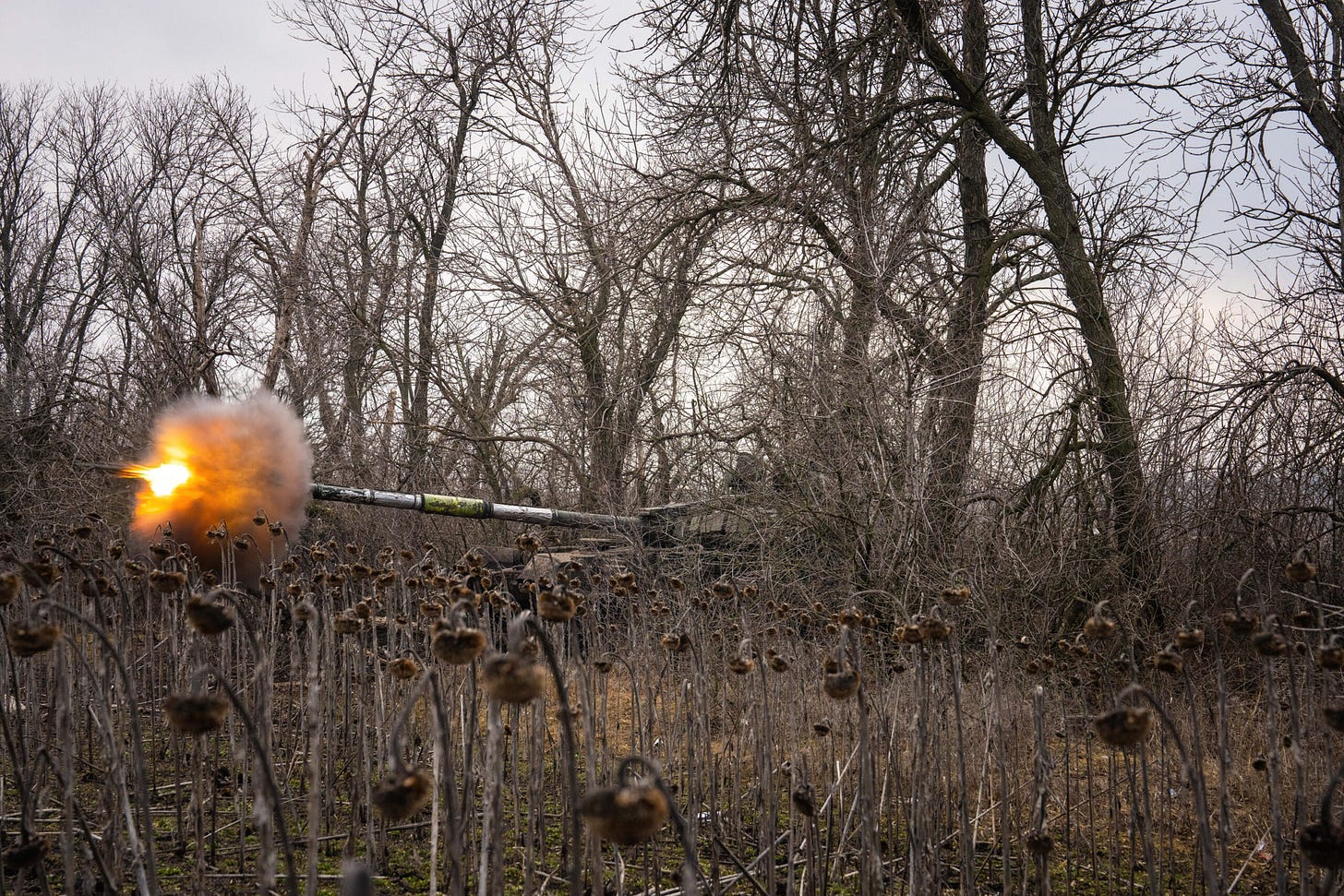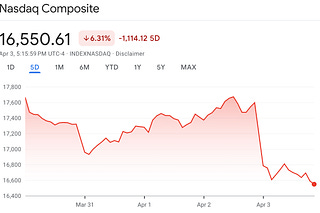

For the past few months, the war in Ukraine has been in a holding pattern. The West has stepped up deliveries of weapons to Ukraine in anticipation of a coming offensive and the “Russia is winning” side has kept up its usual grim chorus. But the fighting itself has been largely limited to positional warfare in Donbass—mostly around the town of Bakhmut and nearby Avdiivka. And in the past couple of weeks, such mainstream publications as the Washington Post and Politico have published reports that strike a pessimistic note about Ukrainian successes, pointing out that high attrition and a continuing shortage of weapons and ammunition are wearing out Ukrainian troops’ ability to confront the enemy and even their will to soldier on.
Were previous Ukraine-friendly assessments of the war too optimistic? Is a stalemate the best Ukraine can hope for? Is it possible that Russia could still eke out of a victory of some sort? Or is the pessimistic narrative a tendentious spin—perhaps intended to create more drama, or even to prepare the public to accept other countries pressuring Ukraine to negotiate a peace agreement or at least a ceasefire with the invaders?
Ukraine’s successes in a war against a much bigger and stronger aggressor have appeared so improbable that even sympathetic observers have experienced moments of worry that these victories might be a comforting illusion. All those “I hate to say it, but Russia is winning”–type tweets from folks who don’t really hate to say it—they hit a nerve. But if you then look at some of the purported Russian wins being celebrated by critics of the pro-Ukraine consensus, you’ll likely feel much more hopeful. Take, for instance, this early March tweet from venture-capitalist-turned-self-appointed-foreign-policy-expert David Sacks:

But this is strange logic. For one, a single victory hardly staves off inevitable defeat: The last German victory in World War II was in April 1945 at the Battle of Bautzen. In this case, it’s far from clear that a Russian victory at Bakhmut would lead to further military advances. What’s more, considering that by the time Sacks tweeted in early March the battle for Bakhmut—a town with a territory of just 16 square miles—had already lasted longer than the Battle of Stalingrad in 1943, a Russian victory there at the cost of untold numbers of lives would hardly have been a great achievement.
And then the fall of Bakhmut didn’t actually happen. At the start of March, Ukrainian officials were signaling that their forces might pull out of the city. Then, for reasons still unclear, the decision was made (apparently against the advice of American and Western officials) to continue defending it. Perhaps there was concern that, as Ukrainian President Volodymyr Zelensky told CNN, Russian troops would have an “open road” through the Donetsk region if the Ukrainians retreated. Or perhaps the Ukrainians calculated that Bakhmut remained the perfect meat grinder for destroying and exhausting Russian forces, which have reportedly suffered massive losses in killed and injured men. (NATO officials estimate that the ratio of Russian to Ukrainian losses in Bakhmut is approximately five to one.) It’s also likely that Kyiv was concerned with the politics and public-relations aspect of surrendering the city: A Russian victory would have given Vladimir Putin and his propagandists something to crow about (and the Kremlin’s Western cheerleaders a pretext to write off Ukraine as a lost cause), and it would have had a demoralizing effect on Ukrainians, too—soldiers and civilians alike.
As of now, as March stumbles to a close, Bakhmut remains in Ukrainian hands, and while the situation in the city officially remains “critical,” it has stabilized somewhat. At the end of last week, the Russian assaults seemed to slow down, either because the troops are “exhausted” or, as Ukrainian reserve colonel and analyst Roman Svitan told Ukraine’s Channel 24, because the natural barriers Ukrainian troops were using as protective ramparts have proven effective. Over Saturday and Sunday, the fighting seemed to escalate again, and Oleksandr Syrskyi, the commander of Ukraine’s land forces, was quoted as saying that “the most intense phase of the battle for Bakhmut is underway.” Russian troops were also heavily shelling the nearby town of Chasiv Yar; capturing it would complete Bakhmut’s encirclement. While much of what’s happening remains shrouded in the fog of war, Ukrainians seem confident that Bakhmut will hold.
One possible problem, as Russian-American analyst and YouTuber Michael Nacke has pointed out, is that the defense of Bakhmut could use up some of the Western weapons Ukraine has been given for the counteroffensive. (Some of those weapons, including Bradley armored vehicles, have already been spotted around the city.) But then there’s another possibility that Nacke considers plausible: that dislodging Russian forces from Bakhmut may actually mark the start of the awaited counteroffensive.
The normal fog of war is exacerbated in this case by the time-honored Russian practice of, as Winston Churchill once described intrigues in the Kremlin, bulldogs fighting under a rug: It’s difficult to know to what extent Russian failures near Bakhmut can be chalked up to infighting between the regular Russian forces and the Wagner mercenary group led by onetime Putin pal Yevgeny Prigozhin, the ex-convict and businessman who opened an infamous new chapter in the war by recruiting convicts (many of them killers) to fight in Wagner’s ranks with a promise of pardon to survivors.
Conflicts between Prigozhin on one side, and the Russian army chiefs and the defense ministry on the other, have been in the news since the start of the year, and there has been much speculation—backed by Prigozhin’s own claims—that Wagner fighters were being deliberately denied both ammunition and assistance. Those fighters have borne the brunt of Russian casualties at Bakhmut, particularly the convicts, who have been treated as expendable by their own command; they are also widely credited with what gains the Russian side has made in this hellish battle. The experienced “Wagnerites,” Ukrainian journalist Matvei Ganapolsky recently said, were “the most capable combatants” in the Russian contingent in Ukraine—but they are now all but wiped out, with help from the Russian leadership because of internal rivalries, grudges, and power struggles.
The infighting is not just between the regular Russian troops and the private Wagner mercenaries. In the past month, Russian soldiers serving in Ukraine have posted several videos begging for help and complaining of mistreatment by members of the Donbass separatist militias under whose command they have been placed. They talk about being shot at if they balk at going into battle under conditions that mean near-certain death and being openly told that they are “cannon fodder.”
In the latest such video, men who identify themselves as “the remnants of the ‘Storm’ unit” say that wounded combatants were discharged from field hospitals after three days with no medical aid—not even to remove shrapnel from their wounds—and then sent back to the front lines, and that after suffering heavy losses they were now in danger of being killed by their own superiors who were trying to cover up the fiasco. Perhaps most shockingly, the men say the Donbass commanders are extorting money from them in exchange for not forcing them into combat. The soldiers may not have called the war itself a crime, but they had no doubt that they were seeing “criminal conduct” all around them—especially on the part of their “criminal leadership.” According to the latest reports, the men who made that video are now being investigated for alleged desertion.
Meanwhile, Ukrainian losses have been getting some attention as well. On March 13, the Washington Post ran a long report describing heavy losses, “privately voiced pessimism,” “grim assessments,” and a “dark” mood both among Ukrainian officials and among some men on the front lines. The first-person accounts in the article include those of a Ukrainian battalion commander, identified in the piece by his call sign “Kupol,” who spoke of the frustration of losing experienced fighters to death and injury, and of having to deal with new recruits who often lacked proper training, couldn’t throw a grenade, and were liable to panic and run under enemy fire.
The article caused quite a stir among the Ukrainian and pro-Ukraine commentariat; in a discussion on a YouTube stream the day after it was published, Ukraine-friendly expatriate Russian pundits Yulia Latynina and Stanislav Belkovsky speculated that it was part of an effort by the more dovish segments of the Washington-based foreign policy establishment to push Kyiv toward a negotiated settlement. That’s a bit conspiratorial (even the most pro-Western of Russian commentators may retain their ingrained habit of reading behind-the-scenes string-pulling into the workings of the news media).
The Washington Post article’s assessment of higher-than-previously-believed Ukrainian casualties—a total of some 120,000 dead and wounded, compared to around 200,000 estimated on the Russian side—may well be close to the truth, and its candid talk about the lateness and inadequacy of some of the Western weapons deliveries was a needed counterbalance to overenthusiasm about the Leopard-2 tanks.
But it is also likely that, for whatever reason, the Post writers erred on the side of overcorrection. For instance, acknowledgments that the picture may not be nearly as dire as the article’s overall thrust suggests—for instance, that some of the best units may be still in training or away from the battlefield in preparation for the big offensive—were mostly buried inside the article and only brought up in passing. And, for what it’s worth, the source, “Kupol”—who was soon identified as Anatoli Kozel, summarily demoted, and then transferred to an instructor’s post for speaking to the media without his superiors’ permission, whereupon he resigned—now says on his Facebook page that his comments “came out all wrong” in the published version of the article. His main point, Kozel explained, was the need for better training for new soldiers—and that was left on the cutting room floor. Kozel, who allows he may have been “overly emotional” during the interview after recent experiences of arduous combat, also wrote that he is now talking to the commanders of his former unit about ways to improve training and reduce casualties and is planning to re-enlist in a different unit and go back to the front lines.
It seems likely, with the Leopard-2 tanks, MiG-29 jets, and other heavy armor arriving in Ukraine, that the long-awaited counteroffensive is coming soon. A sobering warning came recently from Petr Pavel, the new Czech president and the former chairman of the NATO Military Committee, who said that Ukraine will have only one shot at a major counteroffensive. In Pavel’s view, “the window is closing,” because Western military aid is vulnerable to Ukraine fatigue.
But while Pavel’s warning must be taken seriously, it should not be seen as a prophecy of doom. To be sure, if the counteroffensive is a dramatic failure, it will likely cause NATO countries to rethink their strategy and reconsider negotiations with Russia. However, if the counteroffensive makes real gains—even if they are limited—the prospects for continued assistance are good. For what it’s worth, Der Spiegel, one of Germany’s leading news magazines, has just reported a planned massive increase in German military aid to Ukraine in the coming years—starting with a hike from 2.2 billion euros to over 5.4 billion for the purposes of both covering the costs of arms deliveries to Ukraine and replenishing the German military stock that has gone out.
There are also good reasons to question the common assumption that time and numbers are on Putin’s side. Yes, Russia nominally has much more manpower; but its attempts to recruit more contract soldiers last year ended with a whimper, and while the “partial mobilization” helped prevent total disaster for its war effort, it led, at best, to a stalemate that has been terribly costly in terms of treasure, materiel, and lives. The new round of recruitment and likely mobilization will be an even bigger bust: For all the churning of the Kremlin propaganda machine, the news that the recruits and the conscripts are being sent to killing fields is getting through to the population. Even convicts in the penal colonies have become reluctant to enlist.
So far, there is no evidence that the Russian military is learning from its past mistakes and making substantial improvements in training, supplies, or tactics. And motivation—one area where the Ukrainians have a clear and overwhelming advantage—can only get worse for the Russian side, as the fact that no one has any idea what the country is fighting for besides Putin’s ego becomes more and more obvious to anyone still capable of thought.
On the same day that the Washington Post article on pessimism in Ukraine appeared, the expatriate Russian journalist Aleksandr Nevzorov, known for his black humor, posted on his Telegram channel a video of a field near Bakhmut strewn with the bodies of dead Russian soldiers. While surveying this grisly picture, he drily commented:
The Russian Ministry of Defense needs to come up with a less expensive method of corpsifying citizens. What’s the point of transporting mobiks 1,000 kilometers away?
If the goal is to turn people into tons of cold, rotten meat, it’s a lot cheaper to strangle them right after the physical at the draft board office. Right now, everywhere you look, whether near Bakhmut or near Vuhledar, it’s nothing but dead Russians. . . .
However, there are still empty spaces between the bodies. They are going to be filled by those who have already received a draft notice and are being sent to “give their lives” for Putin’s delusions. Watching the videos of still-living Russian conscripts in Ukraine talking about their plight, it seems very likely that as time goes on, more and more of them will come to see the war the same way. And in that sense, time is very much on the side of the Ukrainians, who know exactly why they are fighting and are only more determined to stand their ground.










